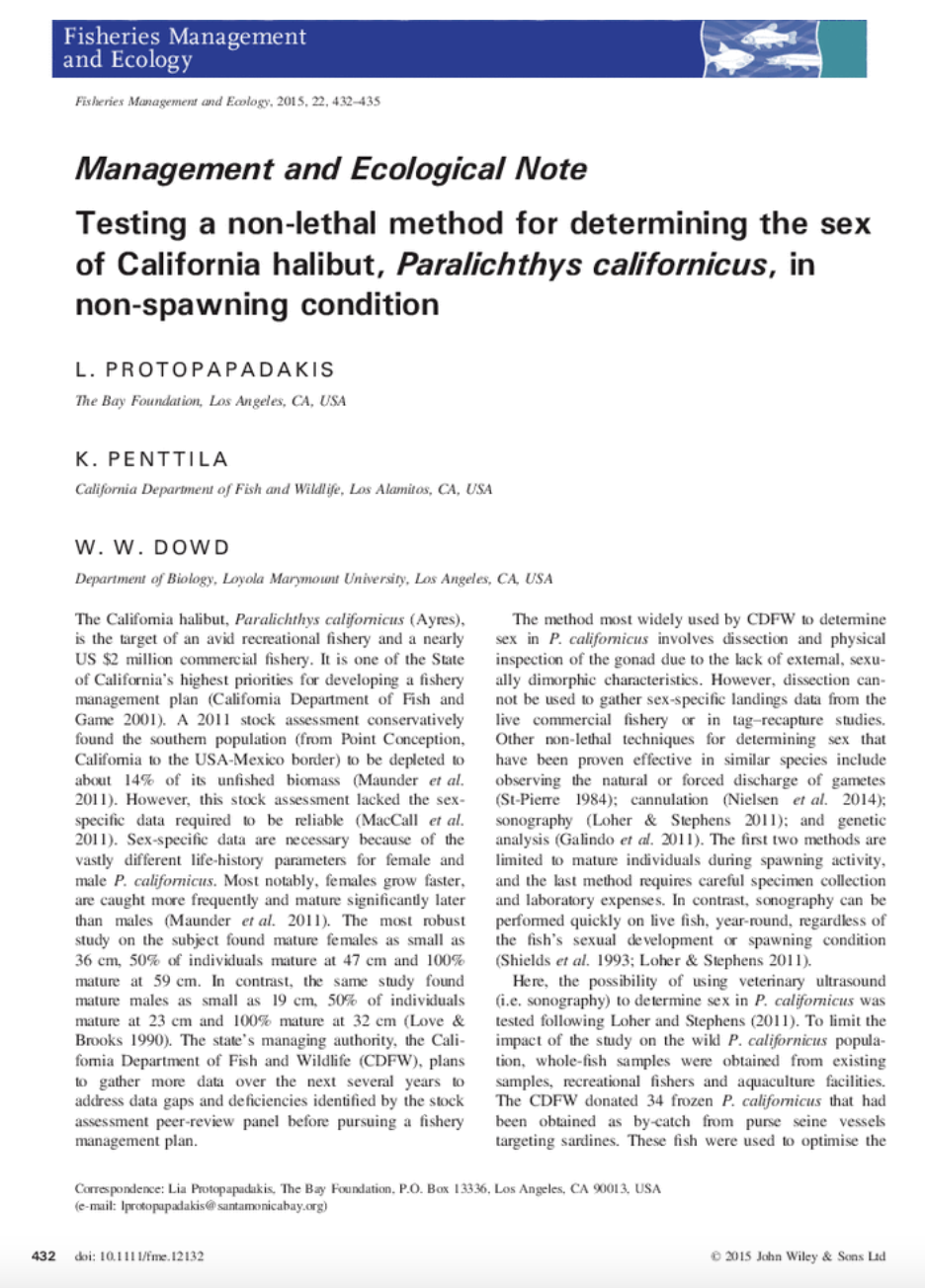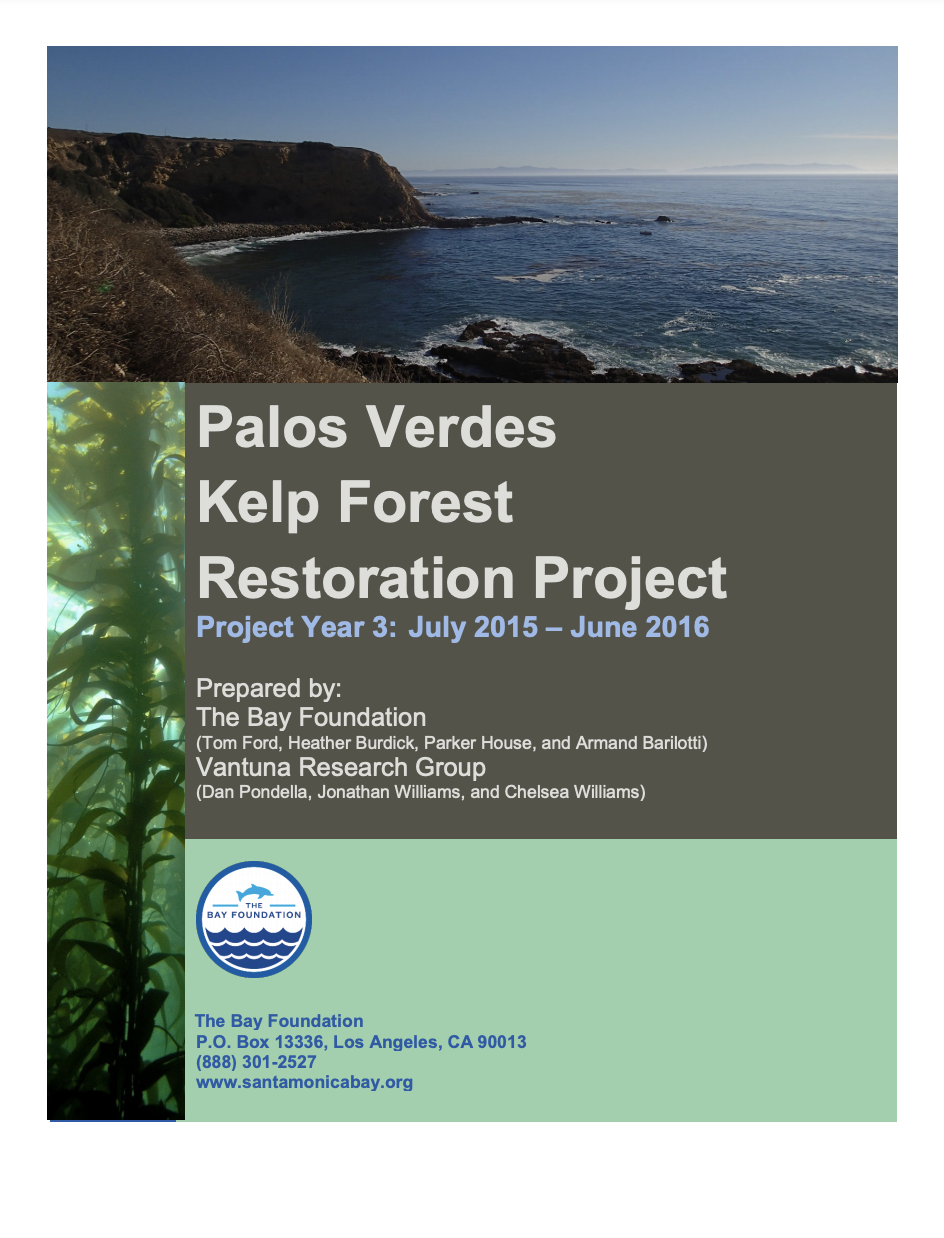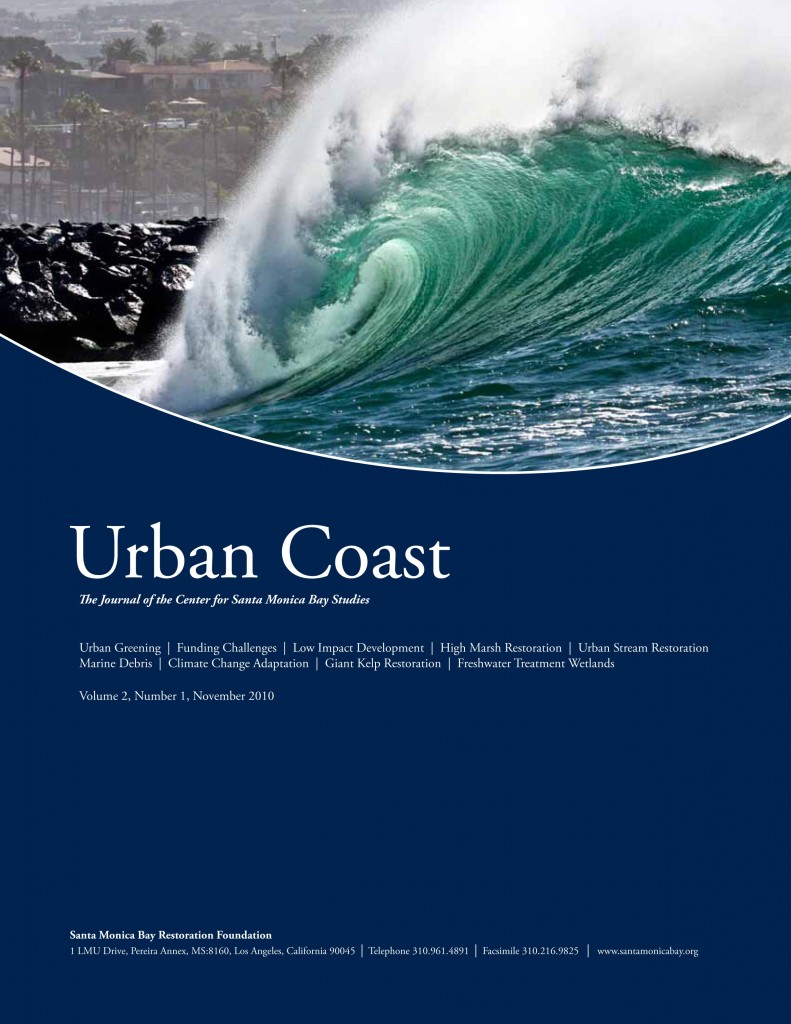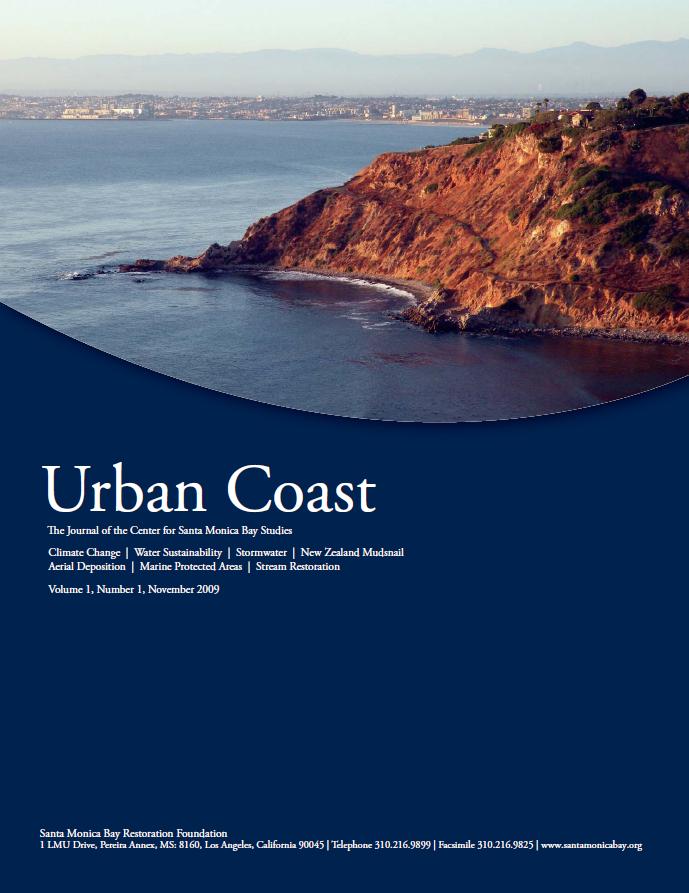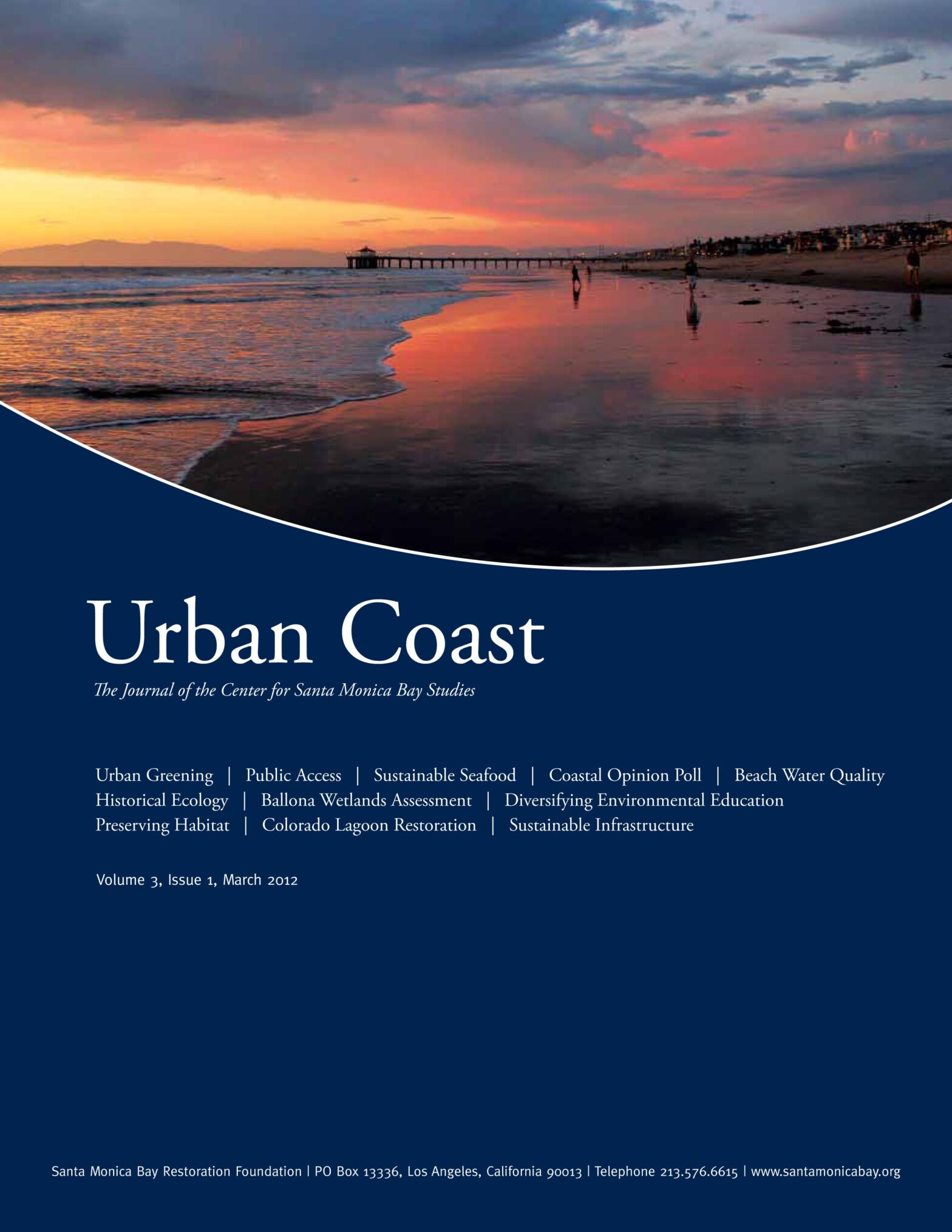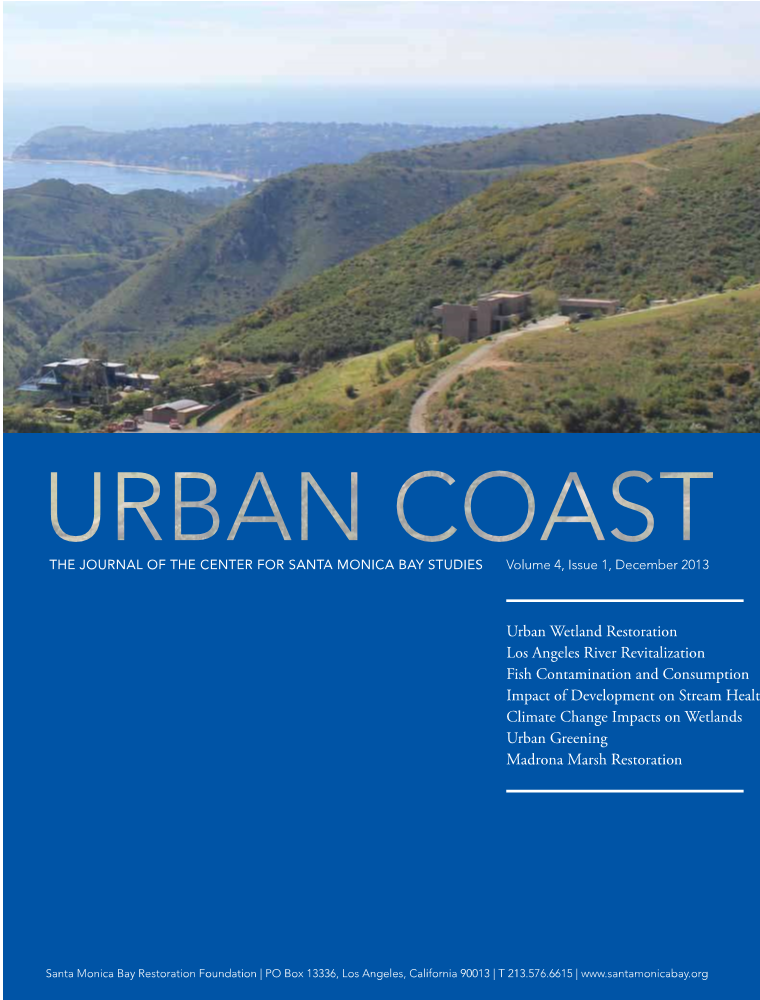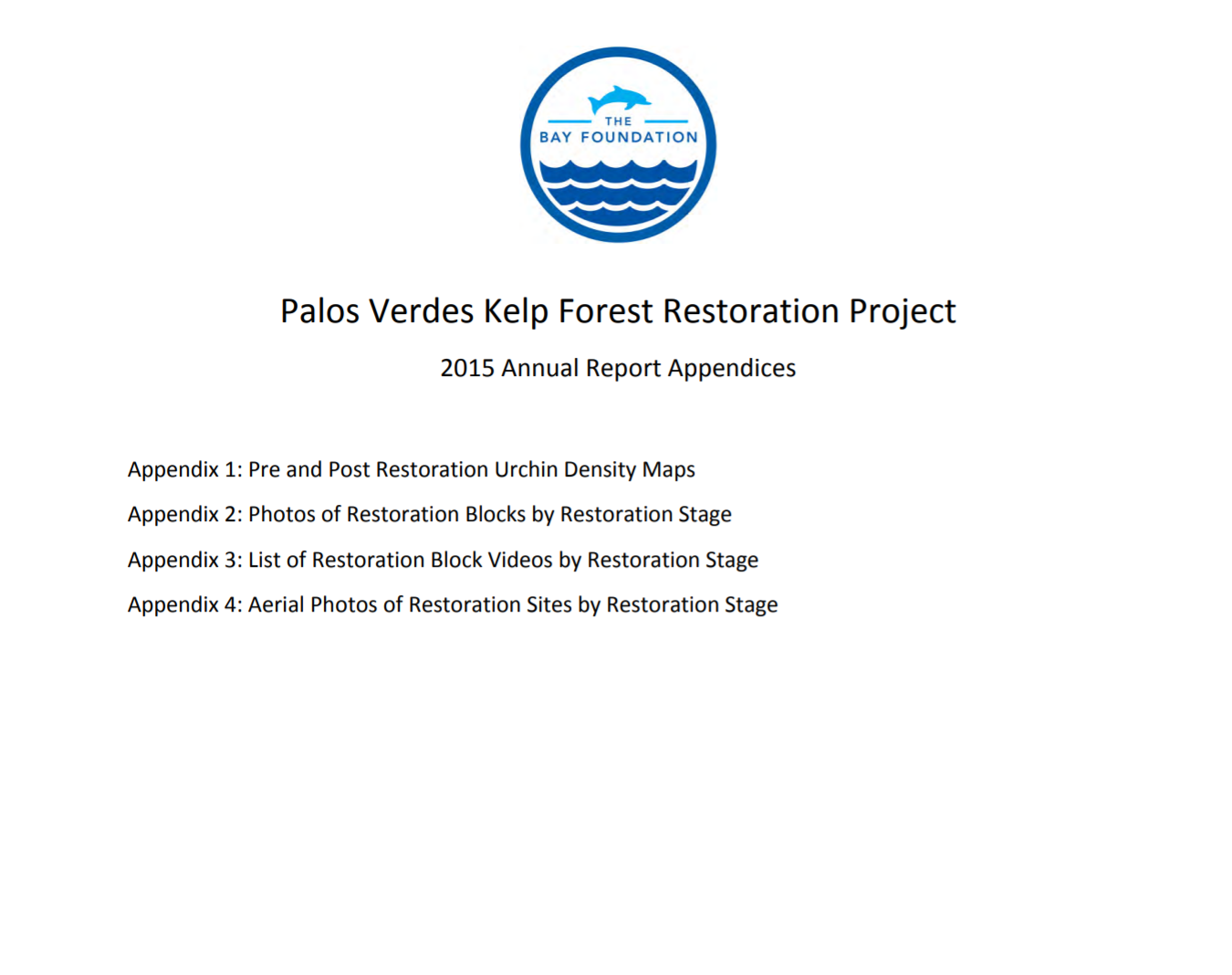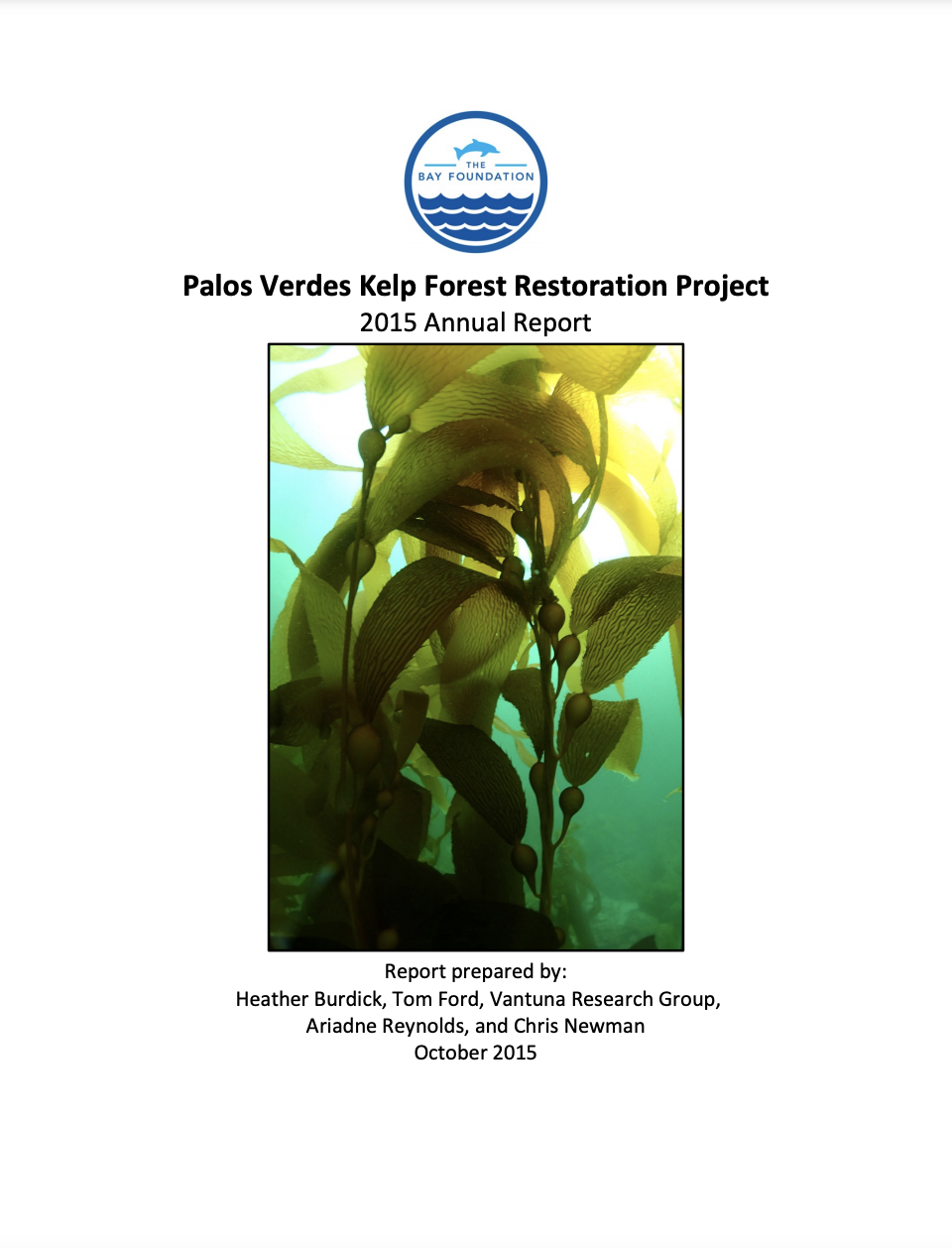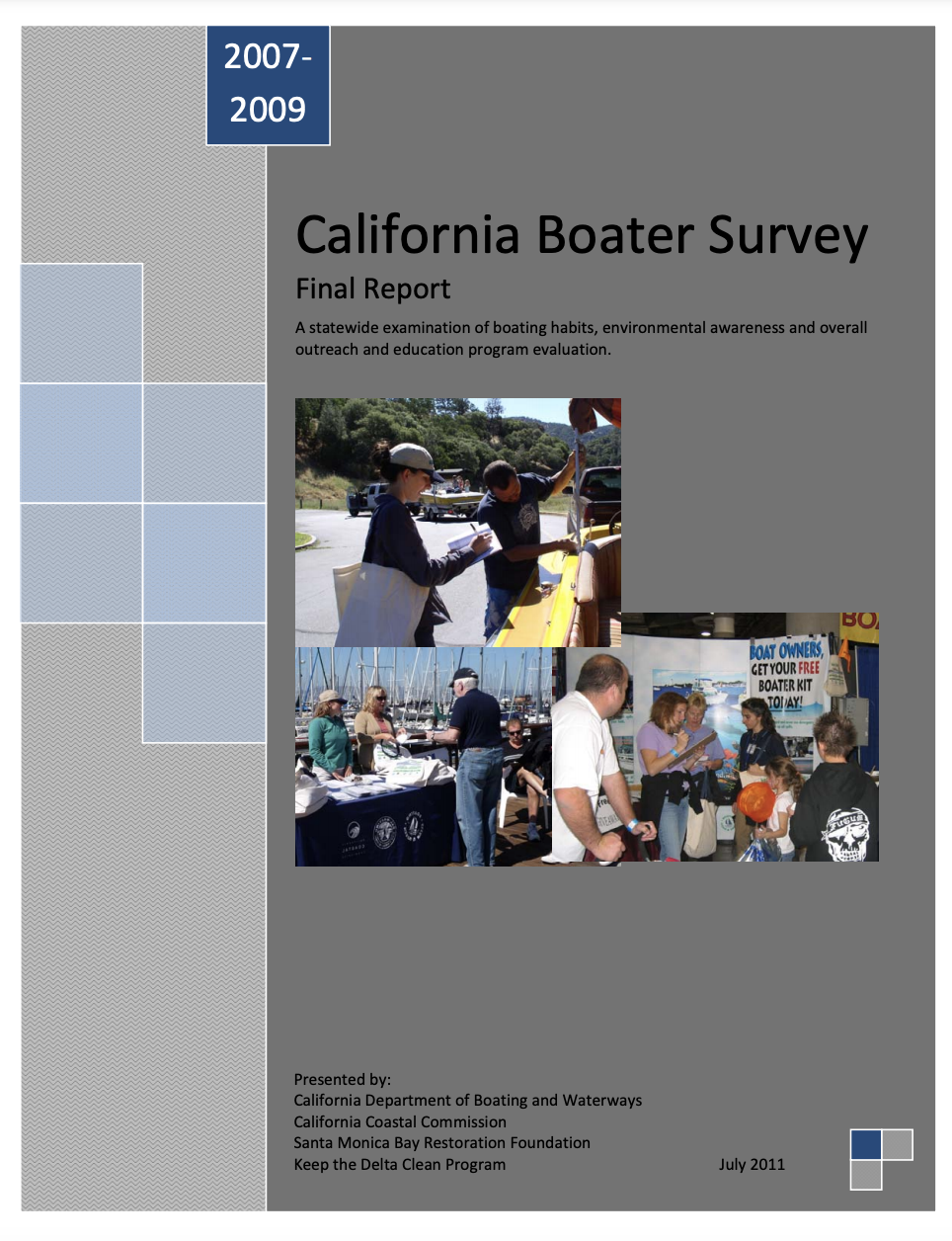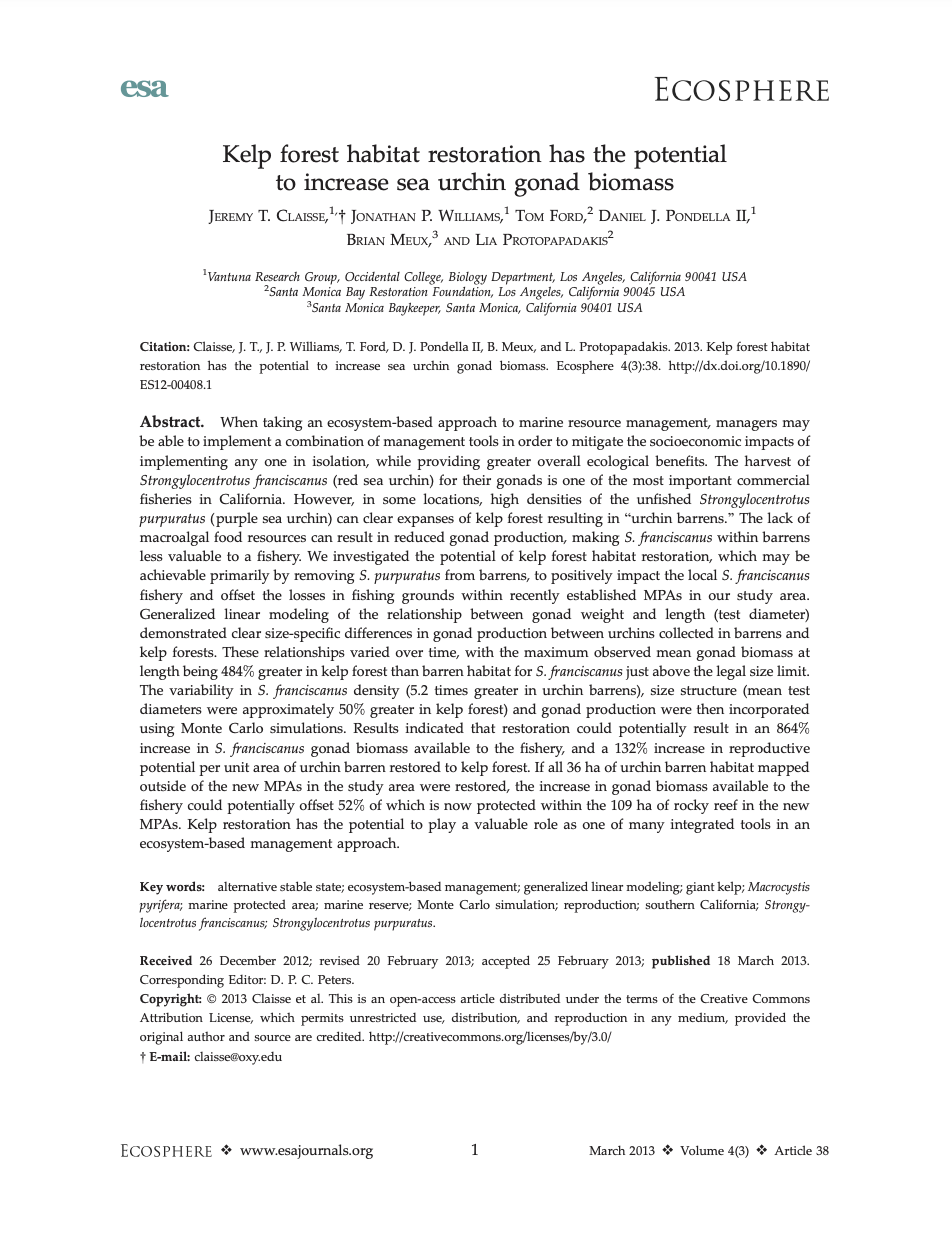Research publication on testing a non-lethal method of determining the sex of California halibut (Paralichthys californicus).
Topic: Ocean
Kelp Forest Restoration Annual Report July 2015 – June 2016 (Year 3)
Kelp forest ecosystems are iconic and productive features along the coast of California with services that span a wide array of consumptive (e.g., commercial and recreational fishing) and non-consumptive (e.g., tourism, scuba diving and coastal protection) uses. This publication provides a Year 3 update on the Palos Verdes Kelp Forest Restoration Project.
Urban Coast Volume 2, Issue 1 – Nov 2010
The Urban Coast multidisciplinary scientific journal is a peer-reviewed product of the Coastal Research Institute, a partnership of Loyola Marymount University’s Seaver College of Science and Engineering and The Bay Foundation. Urban Coast provides a forum for researchers, agencies, advocacy groups, and other science and policy leaders to engage in constructive discussion and information exchange on issues that are pertinent to our… Continue reading Urban Coast Volume 2, Issue 1 – Nov 2010
Urban Coast Volume 1, Issue 1 – Nov 2009
The Urban Coast multidisciplinary scientific journal is a peer-reviewed product of the Coastal Research Institute, a partnership of Loyola Marymount University’s Seaver College of Science and Engineering and The Bay Foundation. Urban Coast provides a forum for researchers, agencies, advocacy groups, and other science and policy leaders to engage in constructive discussion and information exchange on issues that are pertinent to our… Continue reading Urban Coast Volume 1, Issue 1 – Nov 2009
Urban Coast Volume 3, Issue 1 – March 2012
The Urban Coast multidisciplinary scientific journal is a peer-reviewed product of the Coastal Research Institute, a partnership of Loyola Marymount University’s Seaver College of Science and Engineering and The Bay Foundation. Urban Coast provides a forum for researchers, agencies, advocacy groups, and other science and policy leaders to engage in constructive discussion and information exchange on issues that are pertinent to our… Continue reading Urban Coast Volume 3, Issue 1 – March 2012
Urban Coast Volume 4, Issue 1 – Dec 2013
The Urban Coast multidisciplinary scientific journal is a peer-reviewed product of the Coastal Research Institute, a partnership of Loyola Marymount University’s Seaver College of Science and Engineering and The Bay Foundation. Urban Coast provides a forum for researchers, agencies, advocacy groups, and other science and policy leaders to engage in constructive discussion and information exchange on issues that are pertinent to our… Continue reading Urban Coast Volume 4, Issue 1 – Dec 2013
Kelp Forest Restoration Annual Report July 2014 – June 2015 (Year 2) – Appendices
Appendices to Year 2 Annual Report including project maps, photos and additional data.
Kelp Forest Restoration Annual Report July 2014 – June 2015 (Year 2)
This project developed from an interest in the protection and preservation of giant kelp communities in the Southern California Bight. 2015 Annual Report for the Palos Verdes Kelp Forest Restoration Project.
2007-2009 California Boater Survey Final Report
A statewide examination of boating habits, environmental awareness and overall outreach and education program evaluation.
Kelp Forest Habitat Restoration Has The Potential To Increase Sea Urchin Gonad Biomass
(Abstract) When taking an ecosystem-based approach to marine resource management, managers may be able to implement a combination of management tools in order to mitigate the socioeconomic impacts of implementing any one in isolation, while providing greater overall ecological benefits. The harvest of Strongylocentrotus franciscanus (red sea urchin) for their gonads is one of the… Continue reading Kelp Forest Habitat Restoration Has The Potential To Increase Sea Urchin Gonad Biomass
